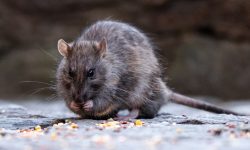Giraffes are some of the most recognizable animals on Earth, known for their towering height and graceful movements across African savannas. Their impressive necks allow them to reach food sources far out of reach for other wildlife.
In the wild, giraffes rely on trees, shrubs, and seasonal vegetation for survival. Their specialized tongues and tough mouths help them eat plants covered in thorns or growing high in the canopy.
Understanding what giraffes eat helps reveal how they stay healthy, how they shape ecosystems, and why their feeding habits play a crucial role in Africa’s natural landscapes.
Understanding the Giraffe Diet

Giraffes as High-Level Browsers
Giraffes are strict herbivores, and most of their food comes from browsing leaves rather than grazing on grass. Their long legs and necks give them access to vegetation that few other animals can reach, reducing competition in the wild.
Nutritional Needs
The giraffe diet is built around fiber, moisture-rich leaves, and minerals found in trees. These nutrients help them maintain strong bones, muscle tone, and their high daily energy needs. Hydration comes mostly from plant moisture rather than drinking water.
Feeding Behavior
Giraffes spend 15–20 hours each day feeding. They take small bites, chew slowly, and constantly move between trees. This steady browsing keeps their digestive system active and prevents overeating at any single plant.
20 Foods Giraffes Love in the Wild
1. Acacia Leaves
Acacia leaves are the most iconic food in a giraffe’s diet, offering moisture, protein, and essential minerals. These leaves help maintain energy during long hours of browsing across savannas.
Giraffes use their long, flexible tongues to strip leaves from thorn-covered branches. Their tough mouth lining protects them from injury, allowing them to eat vegetation most animals avoid.
Acacia trees stay green deep into the dry season, providing a dependable food supply even in drought, which makes them vital for giraffe survival year-round.
2. Mimosa Leaves
Mimosa trees produce soft, lightly sweet leaves that giraffes enjoy, especially during early mornings when they hold extra moisture. These leaves provide quick hydration and gentle nutrition.
Because mimosas grow rapidly after rain, they offer fresh foliage during seasonal transitions when other trees remain dry. This predictable growth pattern makes them a reliable food source.
Giraffes often browse mimosa branches at dawn, taking advantage of cool temperatures and high leaf moisture that supports digestion.
3. Wild Apricot Leaves
Wild apricot leaves are tender, mild in flavor, and packed with nutrients, making them a favorite for many giraffes. Their soft texture allows fast and efficient feeding.
These trees flourish in dry habitats, offering dependable forage even when rain is minimal. This makes them especially important during extended dry seasons.
Giraffes prefer wild apricot leaves because they are easy to chew and gentle on the digestive system, allowing them to consume large quantities with minimal effort.
4. Commiphora Leaves
Commiphora shrubs provide fragrant, fiber-rich leaves that giraffes consume regularly in woodland and dry savanna habitats. These leaves help support digestion throughout the day.
The branches are flexible and easy for giraffes to bend using their necks and jaws. This makes feeding more efficient and allows access to dense pockets of foliage.
Their leaves retain moisture well, which gives giraffes hydration during long browsing sessions under intense sun.
5. Terminalia Leaves
Terminalia leaves are broad, nutrient-dense, and abundant during the wet and early dry season. They provide vitamins and minerals essential for maintaining body condition.
These leaves are easy for giraffes to strip from branches, allowing them to feed quickly when moving through woodland areas. Their large surface area also increases hydration.
Giraffes return frequently to Terminalia trees due to their thick foliage, making them a consistent seasonal food source.
6. Bushwillow Leaves
Bushwillow leaves are fibrous and ideal for promoting healthy gut movement. They remain on branches longer than softer leaves, making them valuable during dry seasons.
Their slightly bitter flavor does not deter giraffes, who rely on strong digestive systems to process tough vegetation. This makes bushwillow an important late-season food.
When other trees lose foliage early, bushwillow trees continue providing essential greenery that helps giraffes maintain weight.
7. Marula Leaves
Marula leaves are refreshing, moist, and filled with essential minerals, making them helpful for giraffes during warm weather. They provide hydration without needing frequent water sources.
These leaves are easy to digest, benefiting both adults and young giraffes still learning to browse efficiently. Their soft texture makes them ideal during early development.
When marula trees fruit, new shoots emerge that giraffes eagerly consume, offering an additional nutrient boost.
8. Knobthorn Leaves
Knobthorn leaves remain green well into the dry season, giving giraffes a crucial food supply when most trees have already shed their leaves.
The leaves contain a balanced mix of nutrients that support muscle maintenance and steady digestion, especially during demanding seasonal shifts.
Giraffes rely on knobthorn trees during drought conditions, often revisiting them for consistent feeding.
9. Albizia Leaves
Albizia leaves are soft, moist, and rich in hydration, making them popular among giraffes during early morning feeding. Their dew-coated surfaces provide extra water intake.
These leaves also contain gentle fibers that support smooth digestion without overwhelming the digestive tract.
Albizia trees regenerate quickly after rainfall, giving giraffes a recurring source of fresh green foliage.
10. Shepherd’s Tree Leaves
Shepherd’s trees grow in harsh, sandy soils where many other trees cannot thrive, making them a reliable food source across arid landscapes.
Their thick, moisture-rich leaves help giraffes stay hydrated in regions where water is scarce. These leaves play an important role in drought survival.
Because shepherd’s trees remain evergreen, giraffes can browse them throughout the year without interruption.
11. Flower Blossoms
Flower blossoms are sweet, delicate, and packed with natural sugars that offer quick bursts of energy. Giraffes actively seek blooming trees during the wet season.
These blossoms provide a refreshing contrast to fibrous leaves, adding variety to the diet when vegetation is plentiful.
Their small size makes them easy to consume quickly, which is especially useful during long feeding walks.
12. Seed Pods
Seed pods contain dense fats and proteins that help giraffes maintain energy, particularly during the late dry season when nutrition declines.
Giraffes use their long tongues to reach pods hanging high in trees, accessing food that most herbivores cannot.
Their nutrient-rich composition supports body condition when leaf quality drops.
13. Wild Fruits
Wild fruits such as marula, desert melon, and raisin bush berries offer hydration and natural sugars that fuel daily movement.
Giraffes consume fruits opportunistically, often plucking them from branches or eating those that fall to the ground.
Their strong jaws can handle tough fruit skins easily, allowing them to extract moisture-rich pulp.
14. New Shoots
New shoots are soft, moist, and rich in nutrients. Giraffes eagerly consume these tender growths after rain when plants regenerate.
Their high water content makes shoots excellent for hydration during hot weather. They also aid digestion due to their tender texture.
Because shoots grow quickly, giraffes can browse large amounts with minimal effort.
15. Thorny Branches
Giraffes can eat thorny branches thanks to their thick tongue and mouth lining, which protect them from injury as they strip leaves from thorny stems.
These branches hold leaves longer during drought, increasing their value when food becomes scarce.
Their ability to feed on thorny plants reduces competition with other herbivores that cannot safely eat them.
16. Creeper Vines
Creeper vines contain soft, moisture-rich leaves that giraffes enjoy while moving through woodland and riverine areas.
They often pull vines from trees using their strong jaws, consuming both leaves and tender stems.
Vines provide dietary variety and become especially abundant during rainy seasons.
17. Succulent Leaves
Succulent plants store water, making their leaves vital hydration sources for giraffes living in arid regions.
Giraffes selectively eat safe succulent species while avoiding toxic varieties through instinct and learned behavior.
These water-rich leaves reduce the need for long travel to watering holes.
18. Bush Shrubs
Shrubs grow rapidly after rainfall, offering giraffes fresh browsing material in large quantities along savanna paths.
Their dense foliage allows giraffes to feed efficiently without moving long distances.
Shrubs play an important role when taller trees lose foliage early in the dry season.
19. Leaf Litter
During intense drought, giraffes may consume fallen dry leaves from the ground. This emergency behavior helps prevent starvation.
Though less nutritious, leaf litter still provides basic fiber that keeps the digestive system functioning.
This habit is temporary and usually appears only under extreme environmental stress.
20. Bark
Bark serves as a last-resort food source, offering minerals that support bone and tooth health during scarcity.
Chewing bark also helps wear down giraffe teeth naturally, preventing overgrowth.
Giraffes peel bark in thin strips, minimizing harm to the tree while still meeting survival needs.
FAQs About What Giraffes Eat
Do giraffes eat grass?
They may nibble small amounts, but grass is not a primary food. Their long necks and body structure are optimized for browsing tall trees instead.
How much do giraffes eat daily?
An adult giraffe can consume 70–75 pounds of plant material each day. Their long feeding hours help maintain steady energy.
Do giraffes drink water often?
Not usually. They get most hydration from plants and may drink water only every few days unless it’s extremely hot.
What plants are toxic to giraffes?
Some Euphorbia species and certain toxic shrubs can cause harm. Giraffes instinctively avoid dangerous plants.
Why do giraffes chew for so long?
They ruminate like cattle. After swallowing leaves, they regurgitate and chew again to fully digest fibrous material.
Do giraffes eat fruit regularly?
Only when available. Fruits are seasonal and supplementary rather than a major dietary component.
Can giraffes eat thorns safely?
Yes. Their thick, rubber-like lips and tongue allow them to consume thorny branches without injury.
What do baby giraffes eat?
They drink milk from their mothers for 9–12 months while gradually learning to browse on leaves.
Final Thoughts
Giraffes depend heavily on leaves, shoots, and seasonal vegetation to survive in the wild. Their height, powerful tongues, and unique browsing habits allow them to reach food sources unavailable to other animals. Understanding what they eat not only reveals how they thrive but also highlights the importance of protecting the ecosystems that sustain them.






